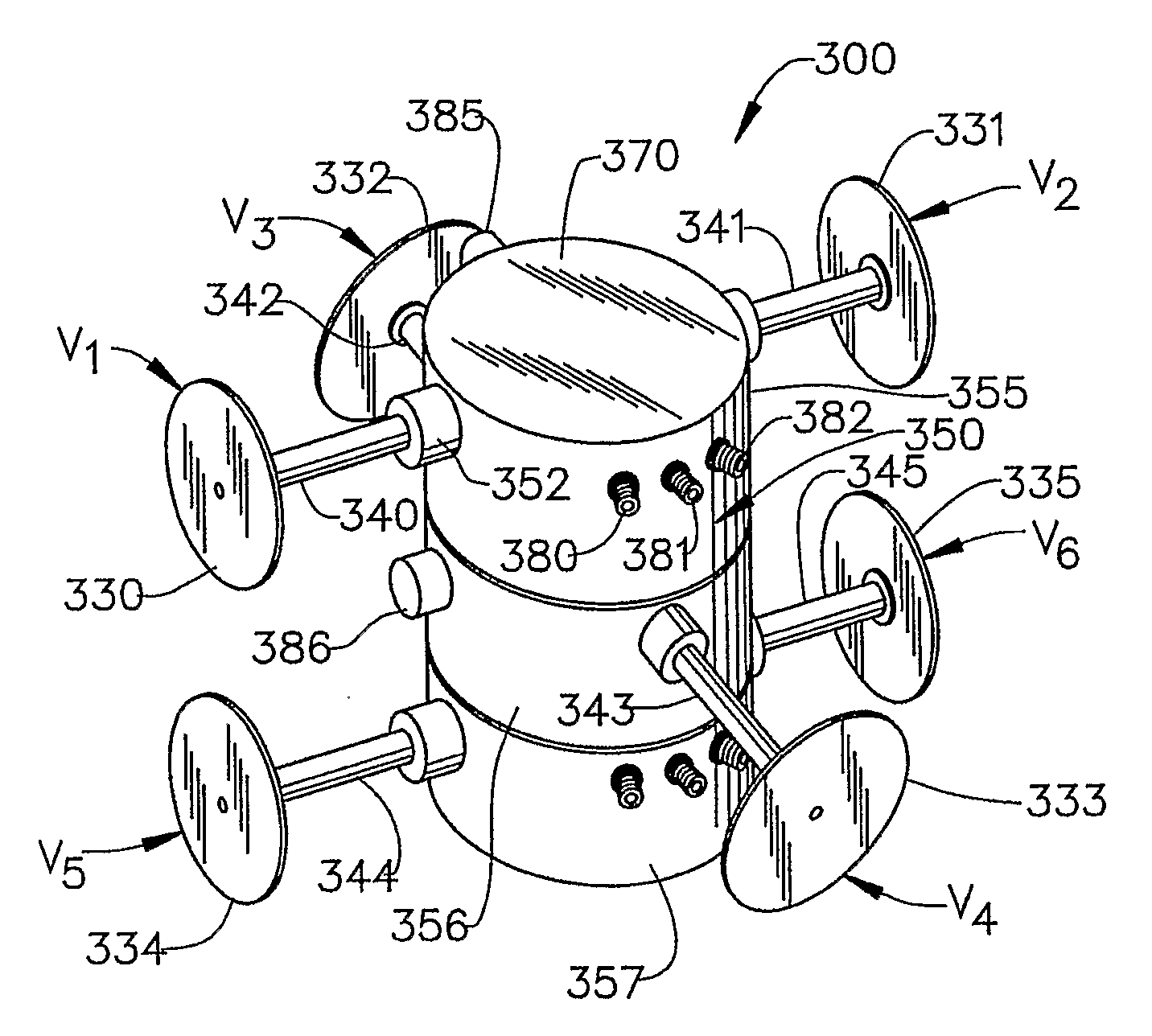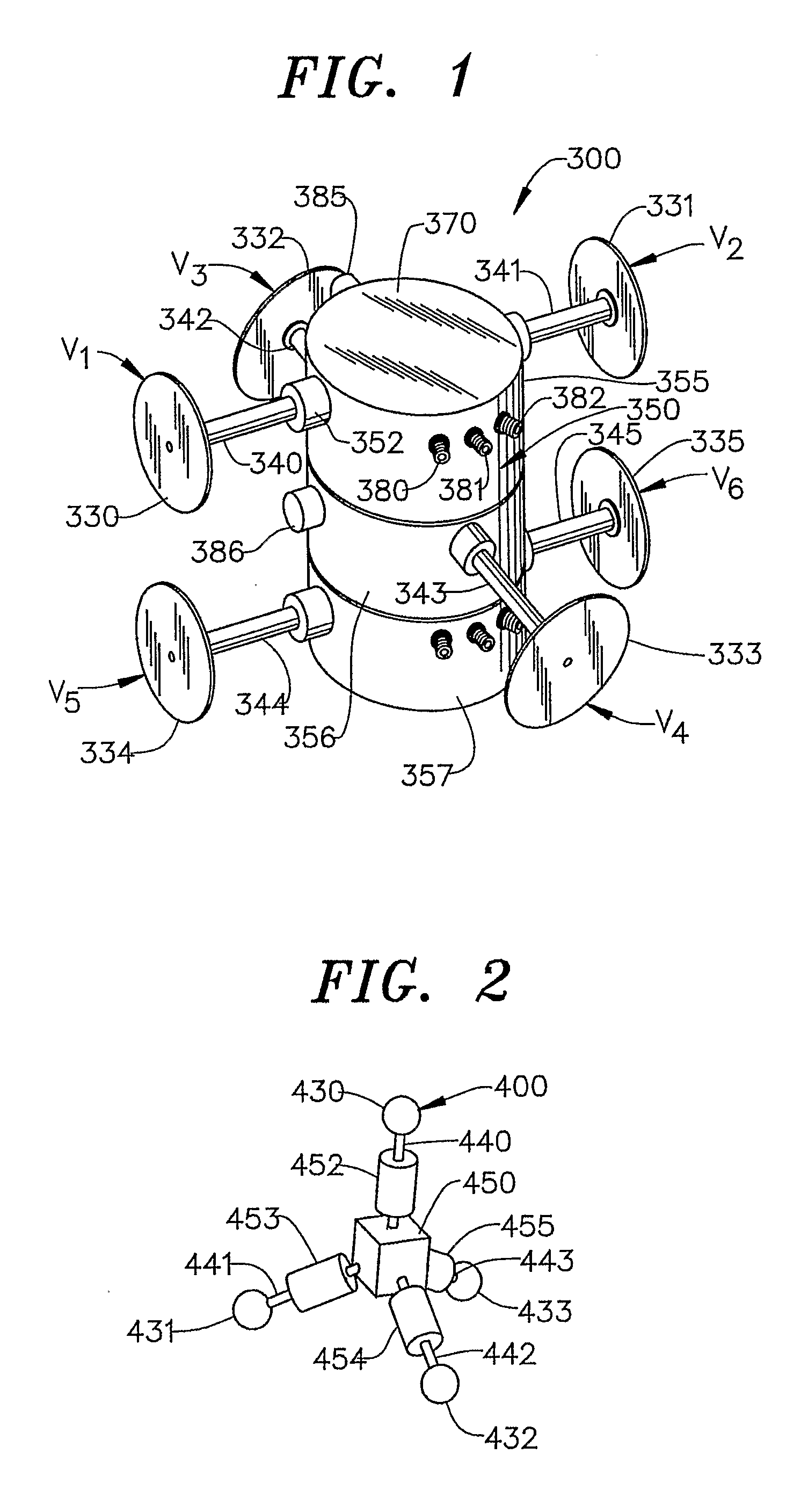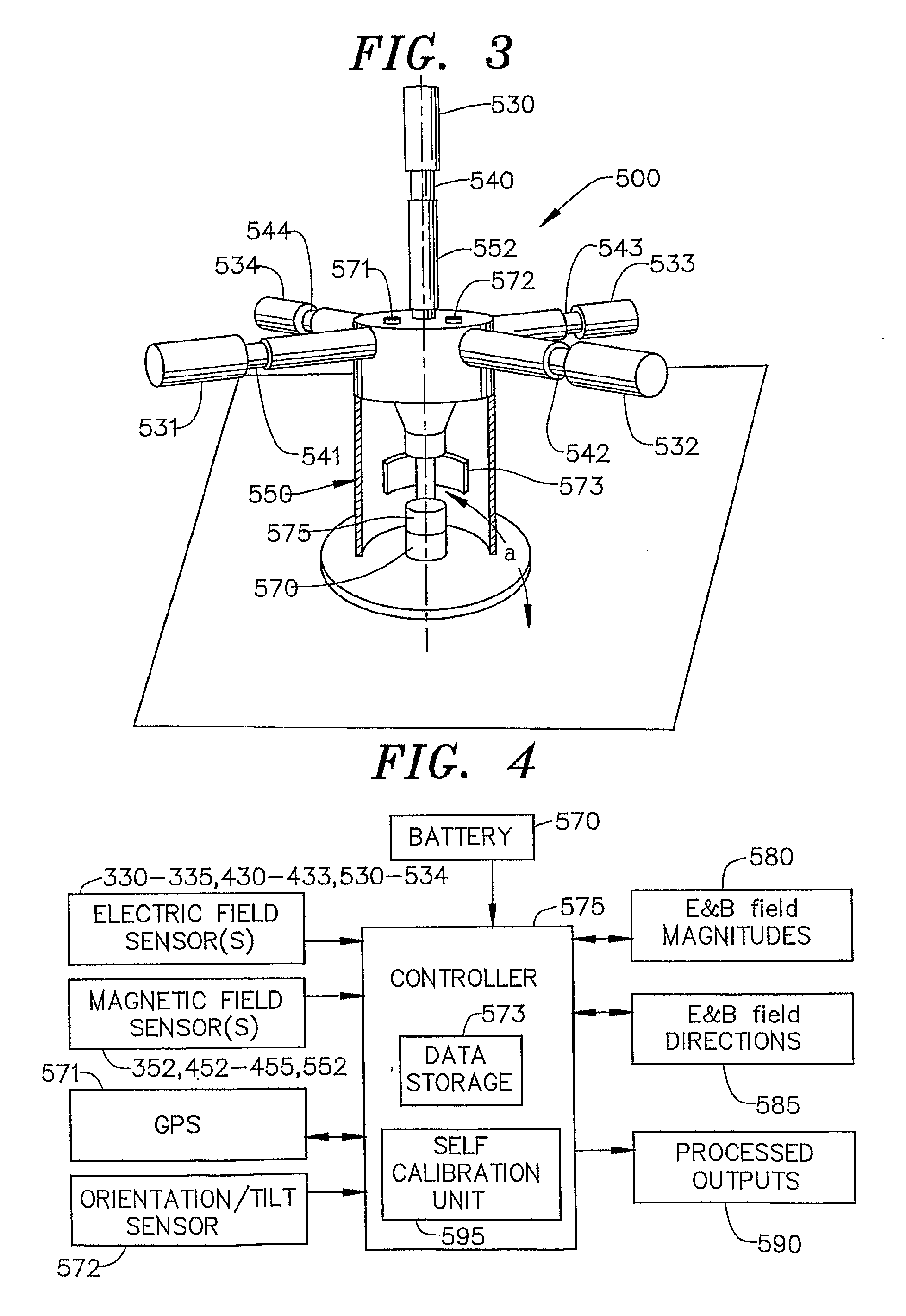Integrated Sensor System Monitoring and Characterizing Lightning Events
a sensor system and integrated technology, applied in the field of electromagnetic sensor systems, can solve the problems of large integration of prior high sensitivity induction sensors, cumbersome system, and inability to monitor lightning events at the same time, and achieve the effect of reducing the number of sensors
- Summary
- Abstract
- Description
- Claims
- Application Information
AI Technical Summary
Benefits of technology
Problems solved by technology
Method used
Image
Examples
Embodiment Construction
[0033]The present invention provides advances in connection with establishing a compact sensor system that can measure multiple vector components of both electric and magnetic fields at very high sensitivity. By a “compact” sensing system it is meant that the region over which a particular field is measured is small relative to the spatial variations in the field that are of interest, and / or is sufficiently compact that a system that measures multiple components of the field is of a convenient size. As will become fully evident below, the compact nature and arrangement of the various sensors allows the sensors to intersect at a common center, while enabling minimum lateral offsets between the sensors.
[0034]An example of a multi-axis, combined E-field and B-field sensor system 300 built according to a preferred embodiment of the invention is shown in FIG. 1. In this system, three orthogonal axes of an electric field are measured with various capacitive sensors 330-335 arranged as pai...
PUM
 Login to View More
Login to View More Abstract
Description
Claims
Application Information
 Login to View More
Login to View More - R&D
- Intellectual Property
- Life Sciences
- Materials
- Tech Scout
- Unparalleled Data Quality
- Higher Quality Content
- 60% Fewer Hallucinations
Browse by: Latest US Patents, China's latest patents, Technical Efficacy Thesaurus, Application Domain, Technology Topic, Popular Technical Reports.
© 2025 PatSnap. All rights reserved.Legal|Privacy policy|Modern Slavery Act Transparency Statement|Sitemap|About US| Contact US: help@patsnap.com



